Jun 23, 2018 | Ozmon Law News
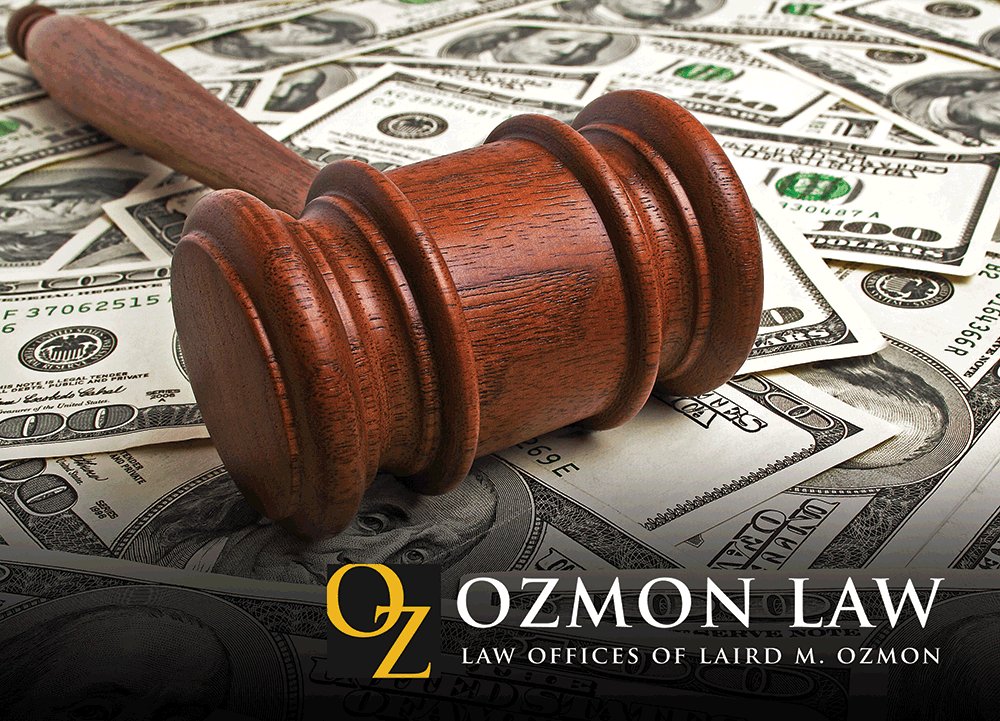
When a person recovers money rightfully owed to him or her as a result of a personal injury settlement or award, it’s important to take proper steps to avoid being victimized after the case is over.
In April 2018, a woman was shot and killed during a Zion home invasion in a bold attempt to steal the money she was awarded in a lawsuit settlement.
This scenario is more common, although not often as violent, as you might think.
Laird Ozmon, a dedicated personal injury attorney at Ozmon Law in Joliet, knows his job is not done once a settlement or award has been secured for his client.
Personal injury attorneys need to make sure they ask all of the right questions to ensure clients are getting the best advice to handle the compensation.
A personal injury settlement or award can be viewed by others as the equivalent of winning the lottery. These clients can often face new perils – such as protecting the financial proceeds from their case.
Protecting younger, mentally impaired or potentially spendthrift plaintiffs from themselves and others is often a serious consideration.
A structured settlement can have significant beneficial tax benefits that can be lost if not coordinated with the defendant(s) before any checks are issued.
It gets even more complicated when clients receive a large sum of money and their settlement or award is publicized. This can trigger a potentially life-changing event.
Clients are best advised to maintain their privacy and protect the confidentiality of their settlement or award.
Nothing should ever be posted on any social media platform advertising participation in a lawsuit – especially not conveying any favorable result.
Good trial lawyers always look out for their clients, even when their case has been resolved!
Jun 4, 2018 | Law News, Ozmon Law News
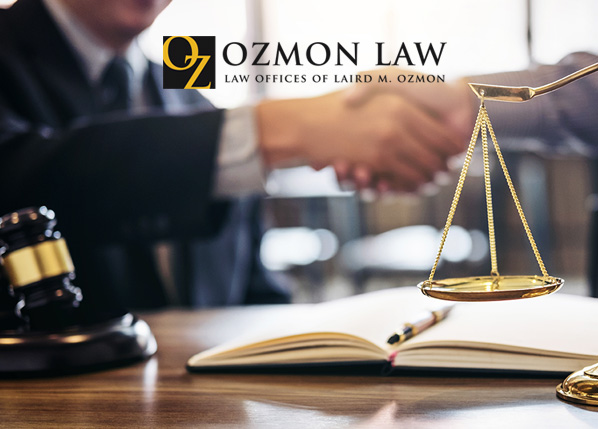
You may have heard about the recent murder of a Zion, Illinois resident in a bold attempt to steal the proceeds of the settlement of a lawsuit. Read the story at Chicago Tribune. This scenario is more common, although not often as violent, as you might think. When a person recovers money rightfully owed to him or her as a result of a personal injury settlement or award, this may be viewed by others in the community as the equivalent of winning the lottery. These clients can often face new perils – such as protecting the financial proceeds from their case.
Dedicated personal injury attorneys know our job is not done once we have secured a settlement or award on behalf of our clients. Each client is different and has varied needs and personal circumstances that we weigh into recommending how to best invest and/or protect their monies. For instance, if a client is a young adult, we might suggest putting some or all of the personal injury proceeds into an annuity or a trust that pays a fixed amount on a regular basis. This allows the recipient to have a steady income over a period of years that earns the maximum amount of interest in a secure investment. Other clients may want to set a particular age for major payouts, i.e. when they need to purchase a home. The overriding concern in either scenario being that a lump sum payment might precipitate irresponsible spending or sharing leaving no money to cover long term disability or healthcare needs. It is often important that such decisions are made before there is any payout. A structured settlement can have significant beneficial tax benefits which can be lost if not coordinated with the defendant(s) before any checks are issued.
It gets even more complicated when clients receive a large sum of money and their settlement or award is publicized. This can trigger a potentially life-changing event. Some clients have reported having to relocate or “lay low” for a lengthy period in order to avoid opportunistic members of their community, friends, relatives, con artists or even criminals. This can present an extremely delicate matter that may require careful planning by a trusted team dedicated to the client’s best interests.
Clients are best advised to maintain their privacy and protect the confidentiality of their settlement or award. Nothing should ever be posted on any social media platform advertising participation in a lawsuit especially not conveying any favorable result. Just as you wouldn’t share your personal financial status (i.e. salary, savings, investment value) personal injury proceeds, even the existence of them, should be treated as extremely private and not to be discussed in polite company.
For our part, personal injury attorneys need to make sure they ask all of the right questions to ensure clients are getting the best advice to handle the compensation they recover so they aren’t victimized a second time. Good trial lawyers always look out for their clients even when their case has been resolved!

Attorney Laird M. Ozmon
May 17, 2018 | Ozmon Law News

If you ride, the first thing should be obvious to you – always pay attention to all traffic around you and I suggest that you assume they all might do something stupid!
The warmer weather means drivers must again be alert to share the road with motorcyclists. The reality is that vehicular drivers with all their attendant blind spots and routine habits to focus only on other vehicles are the usual cause of motorcycle collisions. Motorcycle fatalities have been trending upward over the past 10 years, and riders over the age of 60 are three times more likely to be hospitalized after a crash than younger ones. Unfortunately, victims of motorcycle collisions are often more likely to be seriously injured or killed through minor acts of negligent driving.
Laird Ozmon believes that wrongful conduct deserves rightful compensation. If you or a loved one is injured in a motorcycle accident, contact Ozmon Law for a free consultation. Ozmon Law has represents the seriously or catastrophic injured victims of motorcycle accidents for over 35 years. Mr. Ozmon is a highly accomplished trial lawyer who is uniquely qualified to obtain fair compensation through settlement or if necessary from a jury.
Many motorcycle riders often do not appreciate the gravity of the potential financial consequences serious medical costs can cause for them and their families should they become a victim of negligent driving. Regardless of fault, persons without healthcare coverage must consider obtaining significant medical pay coverage in their motorcycle insurance policies. Remember many people are uninsured or underinsured.
If you are in a serious motorcycle accident, do not post images or discuss your accident or the case on social media. Any posts or images can be used against you in a subsequent lawsuit.
In a serious case, it is not wise to try to negotiate with an insurance company or the negligent party. Ozmon Law has been exclusively dedicated to the representation of seriously injured victims and their families involving personal injury for over 30 years.

Attorney Laird M. Ozmon
Apr 28, 2018 | Ozmon Law News

Expectations drive human behavior. Few people outside of the legal profession have any understanding of the judicial process or the time horizon involved to enable them to form reasonable expectations about it. Instead, the public relies on the fantastical depiction of the legal system represented on television and in movies. Believe me, unlike an episode of The Good Wife, no personal injury case goes from discovery deposition to trial in a day’s time, with private investigators disclosing the key piece of evidence just before closing arguments. The law is made up of rules, after all.
In reality, a party can expect a case to take an average of three to five years to make its way through the legal system, sometimes even longer. Oftentimes, defendants bring multiple motions to dismiss the case so the most crucial part of the process, called “discovery,” does not even get under way for a couple of years.
Discovery is the investigation of the case to adduce the facts that form the evidence admissible at trial that proves the plaintiff’s case to the factfinder, either judge or jury. It can also reveal potential flaws or defenses that allow defendants to defeat a plaintiff’s claim or reduce a defendant’s liability for damages. Discovery is lengthy and painstaking.
During discovery, the plaintiff has a brief moment in the spotlight—a starring role during his or her deposition. This is also incredibly stressful. Since it is the defendant’s attorney conducting the deposition, the plaintiff does not have control of the narrative. It can be very frustrating for an injured party who views it as an opportunity to tell their story. It is my job to take the time necessary to prepare plaintiffs for this and reassure them that we ultimately will control the narrative at trial if necessary.
Then the plaintiff shifts to the background while the rest of the discovery commences, depositions of witnesses for the plaintiff and defendants, experts on both sides, document production. Over a period of years, plaintiff’s attorneys can expend hundreds of hours of diligent work to build the case to their client’s advantage, strategize and get the case in a position, ideally, to get the best settlement. Yes, settlement!
The statistics vary, but well under 10% of civil cases go to trial, more than 90% settle before trial. Settlement is the goal because it means more money in the plaintiff’s pocket (remember the plaintiff is responsible for the hefty expenses involved in the trial, i.e. expert fees, court reporting costs, demonstrative exhibits) and it provides certainty of recovery. While trials are the penultimate moment in the story arc on TV, in real life, they can end in a verdict for the defendant—a reality a good plaintiff’s lawyer must make clear to a plaintiff whose case has potential problems. The prudent plaintiff’s attorney is always preparing and is well-prepared for trial, but avidly pursuing settlement knowing in the real world of juries and courtrooms both are often a crapshoot. The savvy, experienced trial lawyer’s job is to artfully prepare his or her client’s case such that the defendants come to realize a fair and reasonable is in THEIR BEST INTERESTS. If the defendant disagrees, then it’s time to talk to those 12 people in the jury box.

Attorney Laird M. Ozmon
Apr 18, 2018 | Ozmon Law News
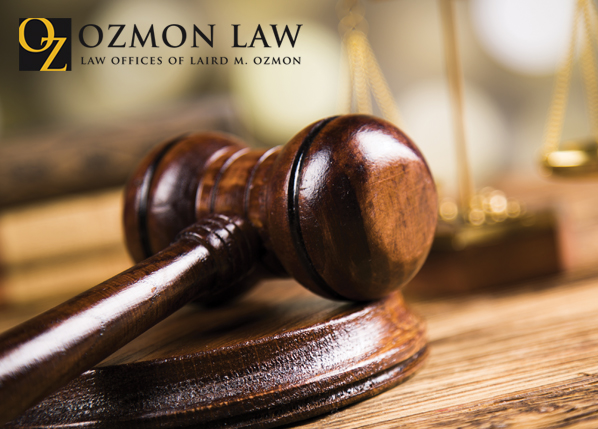
If someone’s death is the result of negligence or misconduct of another, the surviving family members may sue for “wrongful death.”
Laird Ozmon has a proven track record of obtaining high dollar value settlements and jury verdicts involving wrongful death cases.
Click here to Learn about the 5 things to know about wrongful death
Apr 18, 2018 | Ozmon Law News
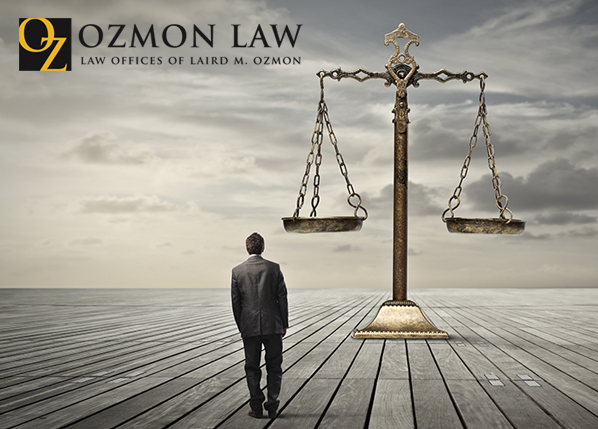
Third party litigation funding services are trending. They have been around in some form for many years, but now they are taking on a new prominence as litigation becomes ever more prevalent, sophisticated and accessible to the masses.
Civil lawsuits are expensive. I’ve pointed out in my blog that the beauty of our system of justice in America is that plaintiff’s attorneys are willing and ethically able to bear their client’s costs and the risk of winning their case. This serves the dual purpose of discouraging attorneys from considering frivolous cases and allowing injured victims access to civil justice regardless of socio-economic status.
This model has promoted a proliferation of litigation funders who serve different purposes. Some litigation funding companies are dedicated to pushing forward a specific agenda by enabling a case to be filed and prosecuted when it might otherwise not be, due to financial considerations. Think Facebook co-founder, Peter Thiel’s funding of the lawsuits that shuttered the doors of Gawker Media.
Other litigation funding services loan money directly to the plaintiff using the lawsuit as collateral. This can be a viable option for cash-strapped litigants considering that plaintiff’s attorneys are ethically bound not to loan money to clients. However, the amount of interest and costs for these loans can be quite high and clients should be made well aware of the financial responsibilities and consequences of entering into any of these agreements.
This scenario was the subject of a recent Illinois case, and although neither the client nor attorney had to repay the loan, the plaintiff’s attorney did not get out unscathed.
In Prospect Funding Holdings, LLC v. Saulter, 2018 IL App (1st) 171277 (March 13, 2018), an attorney arranged for his client, a plaintiff in a wrongful-death suit, to borrow $25,000 from a litigation funding company under a purchase agreement governed by Minnesota law. The case settled, the money was not paid out of the proceeds and the client failed to repay the company, which then sued both client and attorney.
The case caused the Illinois court to consider an issue of first impression concerning an attorney’s liability to a business that loans a client money to be repaid, plus fees and interest, from any settlement or judgment. The Illinois court rejected the litigation funder’s arguments finding the key documents unenforceable because they violated Minnesota law prohibiting a third party from having a contingent interest in litigation. Also, the funding company could not base its claim on a violation of the Illinois Rules of Professional Responsibility governing lawyers because it is not provided by the rules. However, the court warned the plaintiff’s attorney may still suffer ethical consequences for failing to hold the settlement funds in his trust account and referred the matter to the disciplinary commission. The key takeaway here is that third party litigation funding services should be used sparingly and ethically, with all parties being fully informed of the consequences of such an arrangement.
Mar 14, 2018 | Ozmon Law News
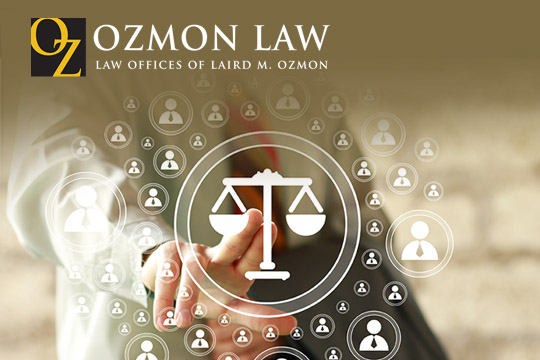
Believe it or not, lawyers have friends. Those of us who have been in the trenches for a long time have worked with other lawyers as collaborators, adversaries or strategic partners. Unlike many professional colleagues, we often see each other in action, in court, at depositions and at the bargaining table, and sometimes even as our worthy opponents. With this experience and earned respect, we have built strong relationships and regularly refer clients within our networks.
Why does this matter to you? Because I, or one of my many friends, may become your trusted ally when you or someone you know are feeling the most vulnerable. And we will take care of you as we would each other.
So if you ever find yourself wondering whether you were wronged, or if something that happened to you, a friend or loved one, could be the subject of a lawsuit or insurance claim, you have a friend in me. I have decades of experience and success serving plaintiffs in personal injury matters, and I only get paid if we win. If you ever feel afraid to speak up or inquire about your rights, my friends are your friends. They may practice in employment or workers compensation law, family law, or estate planning, to name a few.
This means that instead of wringing your hands, suffering in silence or wasting your time wondering, you should pick up the phone and call a lawyer. If you are friendly or acquainted with an attorney, or find an attorney you like through personal recommendations or an Internet search, contact him or her. If your issue is in a different practice area, that attorney will refer you within a network of colleagues who consider it a privilege to hear your story. If you have one lawyer to turn to, you have whole brigade of advocates at your disposal.
Think of lawyers as citizen soldiers in the battle to ensure the rights of the most vulnerable. Every day we are besieged by new tales of the abuse of those rights, such as injuries in the workplace, harassment and abuse, and acts of negligence, professional or other. When it comes to raising our voice for the voiceless, or the ones who have yet to find their voice, attorneys are part of a united front, dedicated advocates, standing at the ready to fight for you. Despite the negative press and the inevitable bad apples, the legal profession stands in the doorway barring you from injustice, so please consider us your friend, not foe.

Attorney Laird M. Ozmon
Mar 14, 2018 | Ozmon Law News
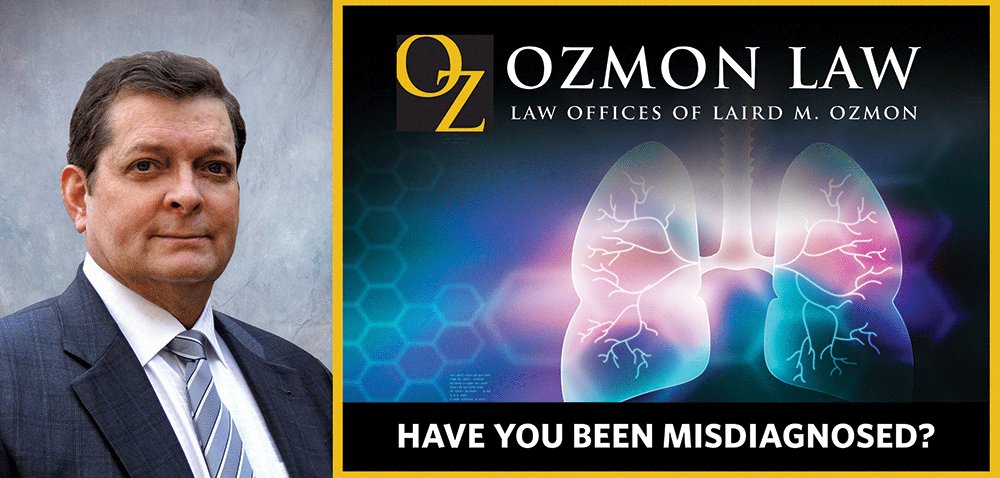
Antitrypsin Deficiency, known as AATD, is an inherited condition passed from parents to their children through their genes.
The deficiency will result in serious lung disease in adults and, at times, can also cause lung disease in young adults.
AATD is commonly misdiagnosed as chronic asthma or COPD. In fact, out of the 12 million patients diagnosed with COPD in America, approximately 1 to 3 percent likely have A1AD.
Left untreated, A1AD results in progressive destruction of lung tissue resulting in severe loss of lung function and life expectancy.
Laird Ozmon of Ozmon Law in Joliet has pioneered the fight to seek fair compensation for those patients who have been misdiagnosed and have suffered such serious lung damage.
View the full article at HeraldNews.com
Learn more about Alpha-1 Antitrypsin Deficiency AATD
Mar 3, 2018 | Law News, Ozmon Law News
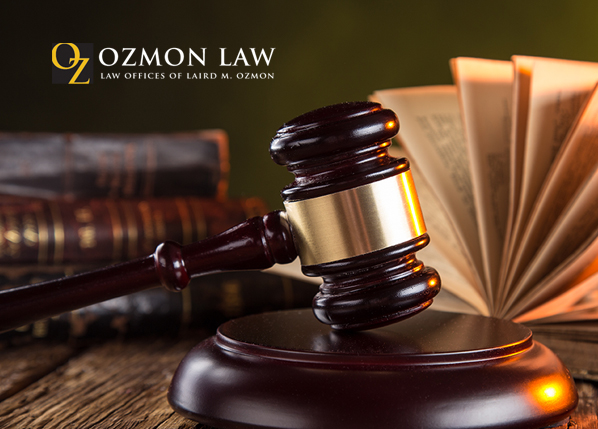
The Illinois Supreme Court has issued a call to action to the legislature regarding the fair and equitable apportionment of the damages between defendants in a personal injury lawsuit. On February 16, 2018, in Antonicelli v. Rodriguez, the court issued an opinion that allowed the most culpable defendant in an auto accident case (an intoxicated driver) to enter into a good faith settlement with the injured plaintiff for the limits of his $20,000 insurance policy. This left the other defendant, the employer of the driver of the truck following behind the plaintiff when the settling defendant made a U-turn in front of her, potentially holding the bag at trial. Make no mistake, the truck company had a bigger bag and deeper pocket, so it was in the plaintiff’s interest to take the policy limits settlement from the driver and focus on the other defendant at trial.
The core issue here is a broader one—whether the jury may be allowed to apportion blame among all culpable defendants regardless of whether all are present actively defending themselves at trial. The defense lawyers admitted their primary objective was to get the settling defendant’s name on the verdict form eventually used at trial so they could reduce their liability by the percentage the jury found attributable to the settling defendant. The truck company tried to distinguish the case calling the driver’s conduct intentional because he was high on cocaine. The Court was unmoved, having found no prior precedent that a traffic collision caused by an intoxicated driver is an “intentional tort.” Moreover, the plaintiff made no such allegations.
The Illinois high court said the statute that governs this question, the Joint Tortfeasor Contribution Act, did not provide for such a result. Nevertheless, there are competing interests vying for consideration here. The purpose of the Act is to encourage settlements and equitable apportionment of damages among defendants. The purpose of our civil justice system is to fully compensate injured victims. Consequently, if defendants settle, then do not defend themselves at trial, the evidence a co-defendant produces pointing a finger at them will go unanswered. This would likely result in empty chair defendants being found disproportionately responsible for damages when their damages have already been fixed based on a good faith settlement.
Essentially the Court determined the injured plaintiff’s risk of not recovering full compensation outweighed the non-settling defendant’s risk of having to pay more than its “fair share” of the jury award. Current law levels the scales a bit by allowing the defendant to set-off the amount of the settlement without the jury’s knowledge so it doesn’t factor into their calculation. This would result in a $20,000 deduction from a jury verdict in the case here.
This initiative will require Plaintiff’s attorneys to meet this call to action with full force to insure any amendments to the Contribution Act do not diminish the plaintiff’s right to full and fair compensation. In other words, we have to do what we do best, fight for the rights of injured victims.

Attorney Laird M. Ozmon
Feb 19, 2018 | Law News, Ozmon Law News

As I mentioned in my last blog, medical malpractice cases are steep uphill battles. Nearly 80% of trials end in a defense verdict despite medical error being the nation’s third leading cause of death. The appellate court is an equally unfriendly place for victims of medical negligence. But recent rulings have brought some moderately good tidings for plaintiffs.
To give you a brief overview, Arient v. Alhaj-Hussein involved a wrongful death case on behalf of a patient who died after a medical procedure rendered her a paraplegic. A Cook County jury awarded nearly $8 million to her estate. Even though the Appellate Court found reversible error at trial, the court upheld the verdict. The errors related to three of the plaintiff’s five alternative claims of negligence. The defendant did not ask the jury to separate its verdict according to those claims using special interrogatories (specific questions to the jury to be answered when it renders the verdict). Instead it submitted a general verdict form, so the court refused to reverse because it had no way to determine on what acts of negligence the jury based its verdict.
Another appeal brought mixed results after a heartbreaking turn of events roiled plaintiffs in the case of Jefferson v. Mercy Hosp. & Med. Ctr. The plaintiff claimed permanent brain damage due to medical negligence. But after the case was submitted to the jury and before it rendered a verdict for over $22 million, $15 million of which was allocated to future damages, the plaintiff died. The defendant hospital sought to overturn the verdict or at least reduce the amount of the damages. Having never reviewed such circumstances, the Appellate Court ruled that until the moment the verdict is rendered the case may be transformed into a survival action if the plaintiff dies. In that event, the plaintiff is not entitled to damages that accrued after the plaintiff’s death. This ruling allowed the plaintiff’s estate to retain just over $7 million in past damages but the family lost $15 million in future damages the plaintiff would not suffer due to her death. The family will likely be able to pursue a wrongful death claim they filed post-trial by way of an amended complaint; those proceedings were stayed pending this appeal.
In both cases the defendant’s strategy concerning verdict forms or special interrogatories rankled them on appeal. In Jefferson the defendants objected to plaintiff’s tendered instruction seeking to separate past and future disfigurement. Without this distinction, the court could not discern what portion of the jury’s $2.5 million award for disfigurement was attributable to future damages so it let the award stand. The key takeaway for trial attorneys is that the preparation of the documents memorializing the jury’s verdict should be tailored to each case; conventional wisdom may not always apply.

Attorney Laird M. Ozmon












